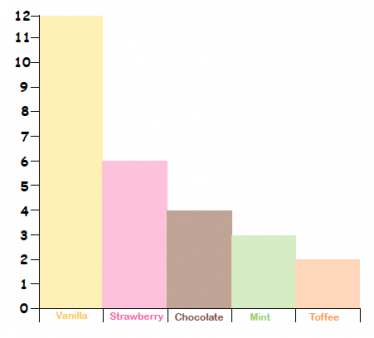Mathematical Diagrams Bar Diagram Math The Best Drawing
A tape diagram is a visual model that looks like a segment of tape and is used for representing number relationships and word problems. Using this method, students draw and label rectangular bars to illustrate the quantities in a problem.
Re: Dropbox Icon missing from top menu bar (Mac OSX) and files in Dropbox folder not syncing with online storage Drag the icon from the applications folder to the dock bar. Once I did that mine reappeared in the menu bar.  Once the basic installation is complete, a Dropbox icon will be added to your Mac’s menu bar, the Dropbox app will be installed in your /Applications folder, and you'll be presented with the Dropbox sign-in window. The Dropbox desktop application is available for Linux, macOS, and Windows operating systems. Once installed, the app creates a Dropbox folder on your computer. This folder works just like any other folder, but with a few important differences.
Once the basic installation is complete, a Dropbox icon will be added to your Mac’s menu bar, the Dropbox app will be installed in your /Applications folder, and you'll be presented with the Dropbox sign-in window. The Dropbox desktop application is available for Linux, macOS, and Windows operating systems. Once installed, the app creates a Dropbox folder on your computer. This folder works just like any other folder, but with a few important differences.
Bars representing known quantities are labeled with their value, while a question mark is often used to indicate an unknown quantity. Students then use the diagram to solve the given problem. Tape diagrams are typically used in grades 2-8 to solve problems that involve the four operations with whole numbers, fractions, and ratios. Tape diagrams can help students develop problem-solving skills and algebraic thinking.
When students are instructed on how to create a clear tape diagram displaying the key information from a problem, they can more easily determine which operation(s) to use to find the solution. As such, this method for visualizing information can be particularly helpful for students with processing, attention, and memory difficulties. Consistent use of tape diagrams can also prepare students for algebra and higher-level mathematics, as they gain practice identifying known and unknown quantities in a problem and their relation to one another.
Mathematics Symbols Chart. Edit this example. Powers of Ten Math Diagram. Edit this example. Math Diagram - One Fourth & One Sixth Fractions. Edit this example. Math Chart - One Half & One Third Fractions. Edit this example. Math Diagram - One.

To reinforce the relationship between multiplication and division, a teacher can model solving the examples presented below using tape diagrams. Example 1: There are 7 boxes of markers. Each box holds 8 markers.
How many markers are there in all? Example 2: A grower picks 45 apples and packs them equally into 5 boxes.
Using a bar diagram. This is a comparison problem. We need a bar for the newspapers Ben sold and a bar for the papers sold by James. To indicate that we need to find the total, we put a bracket to the right of our drawing, encompassing both bars. 830 – 177 = 653 newspapers James sold. 830 + 653 = 1483 newspapers sold altogether. Mathematical diagrams are diagrams in the field of mathematics, and diagrams using mathematics such as charts and graphs, that are mainly designed to convey mathematical relationships, for example, comparisons over time. A math diagram is any diagram that conveys mathematical concepts. This includes basic charts and graphs as well as sophisticated logic and geometrical diagrams. Math and science concepts are often easier to understand with a visual aid.
How many apples does the grower pack in each box? After modeling both problems, the teacher can then lead the class in a discussion of what they noticed about how you solved the two problems and the tape diagrams you created for each one.
Tape diagrams are a great way to help students visualize ratio problems. For instance, with a class that has some practice using tape diagrams, display the following problem on the board: Hillview High School hosted a basketball tournament.
The ratio of boys to girls who participated in the tournament was 5:2. There were 15 boys. How many girls participated? Working with partners, ask students to create tape diagrams that represent the information presented in the problem. (Students should focus on creating the tape diagram at this stage, not finding the solution.) Combine pairs to create groups of four. Ask groups to compare their tape diagrams, and determine which one best illustrates the problem.
 (Groups can draw a new tape diagram, if needed). Provide an opportunity for groups to share their diagrams with the class. With the whole class, demonstrate creating a tape diagram for the problem, while addressing any misconceptions observed from student examples. Ask students to return to their groups and use their tape diagrams to solve the problem.
(Groups can draw a new tape diagram, if needed). Provide an opportunity for groups to share their diagrams with the class. With the whole class, demonstrate creating a tape diagram for the problem, while addressing any misconceptions observed from student examples. Ask students to return to their groups and use their tape diagrams to solve the problem.
Photo by via flickr. In this, we are studying and applying its lessons to home education. When adding, we combine two addends to get a sum.
For subtraction we are given the sum and one addend and must find the “missing addend”. Parker & Scott J. Baldridge Notice that subtraction is not defined independently of addition. It must be taught along with addition, as an inverse (or mirror-image) operation.
The basic question of subtraction is, “What would I have to add to this number, to get that number?” are a very fundamental idea in mathematics. The inverse of any math operation is whatever will get you back to where you started.
In order to fully understand a math operation, you must understand its inverse. Visit for more.] The elementary grades 1-4 laid the foundations, the basics of arithmetic: addition, subtraction, multiplication, division, and fractions. In grade 5, students are expected to master most aspects of fraction math and begin working with the rest of the: decimals, ratios, and percents (all of which are specialized fractions). Grow ever more complex as well, and learning to explain (justify) multi-step solutions becomes a first step toward writing proofs. This installment of my is based on the,.
Performance tests are conducted using specific computer systems and reflect the approximate performance of iMac. Tested with FIO-2.17, 1024KB request size, 150GB test file and IO depth=8. Applemactimeline7002005imacg5 love for mac. • 1 TB = 1 trillion bytes; actual formatted capacity less.